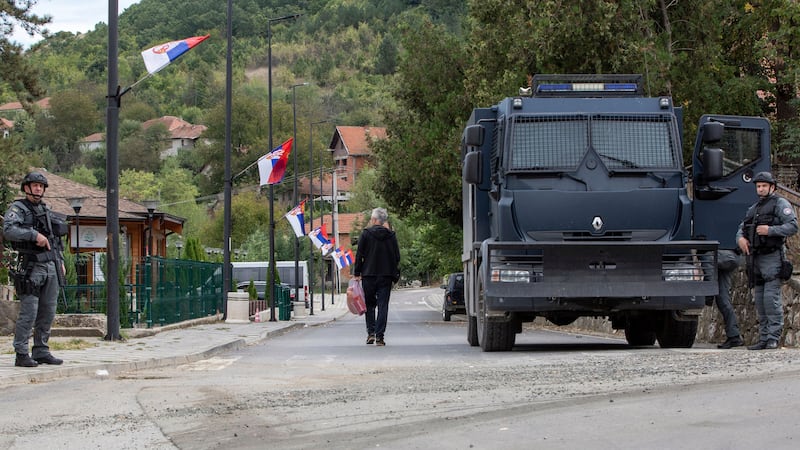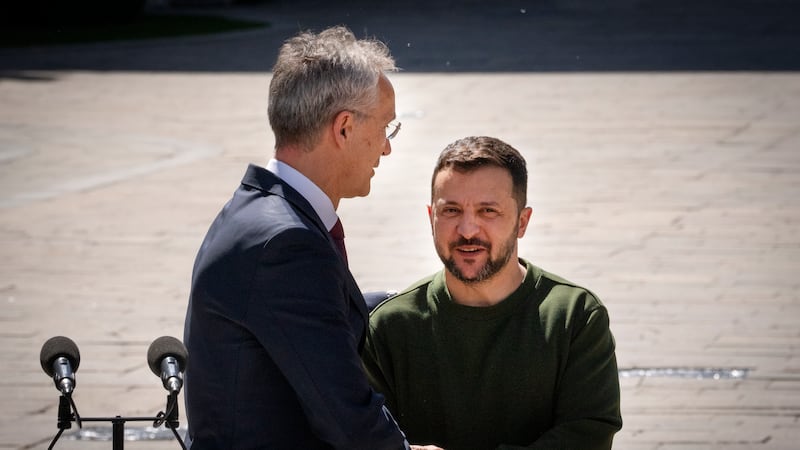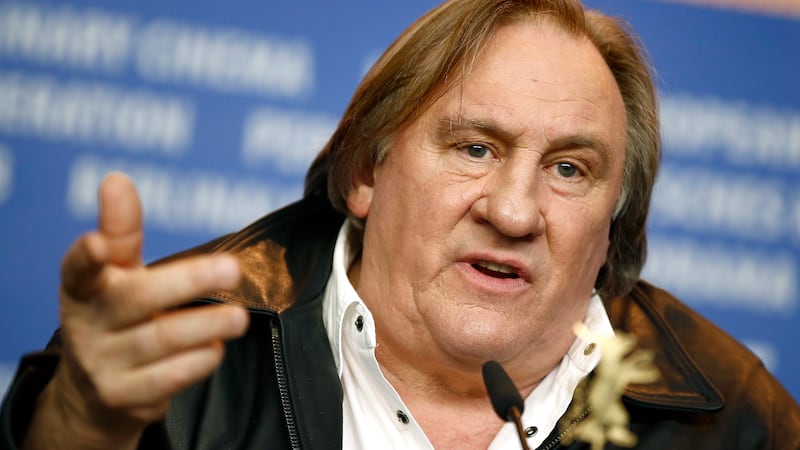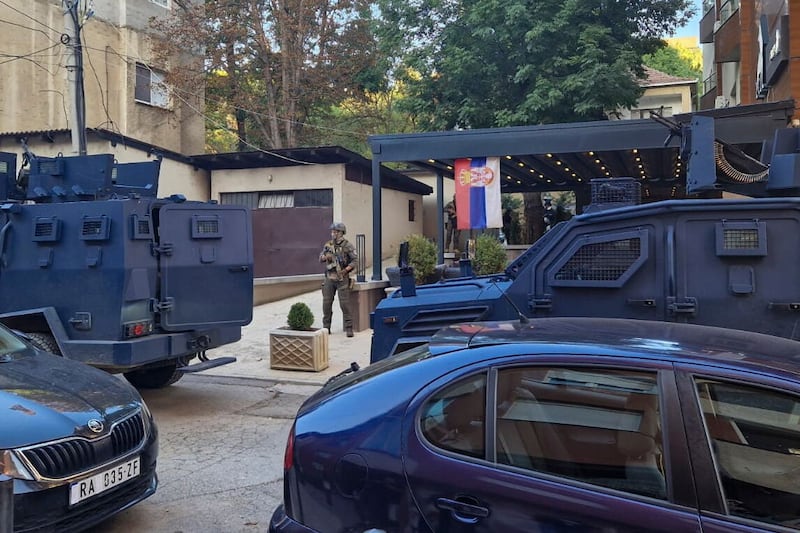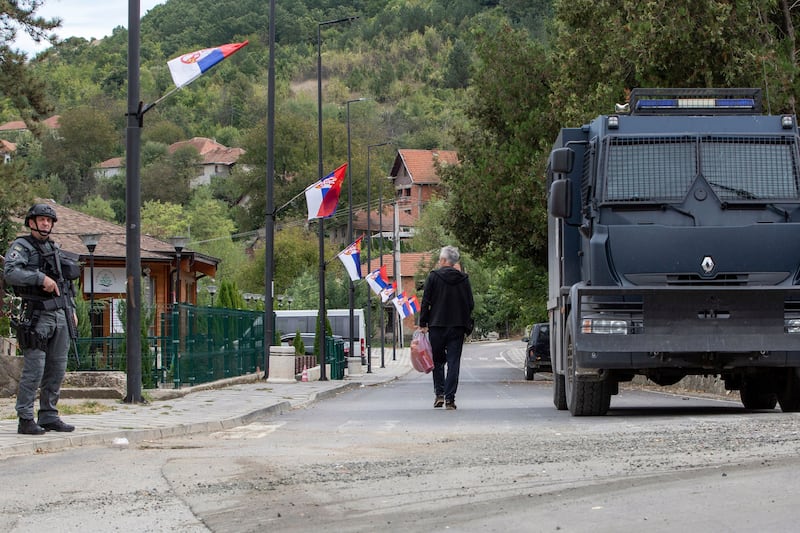Kosovo’s interior minister has accused Serbia of direct involvement in weekend clashes and is investigating the possibility of Russian involvement in the violence, which left four people dead and has further strained relations between the former wartime foes.
One Kosovo police officer and three gunmen were killed in Sunday’s shootout between Serb insurgents and Kosovo police.
Eight people were initially arrested but four of them have been released from custody because of a lack of evidence.
Kosovo interior minister Xhelal Svecla said investigators are looking at evidence linking Russia, an ally of Serbia, to the armed assault.
Russian weapons, other equipment and documents suggesting Russian involvement were discovered after the daylong gunfight, he said.
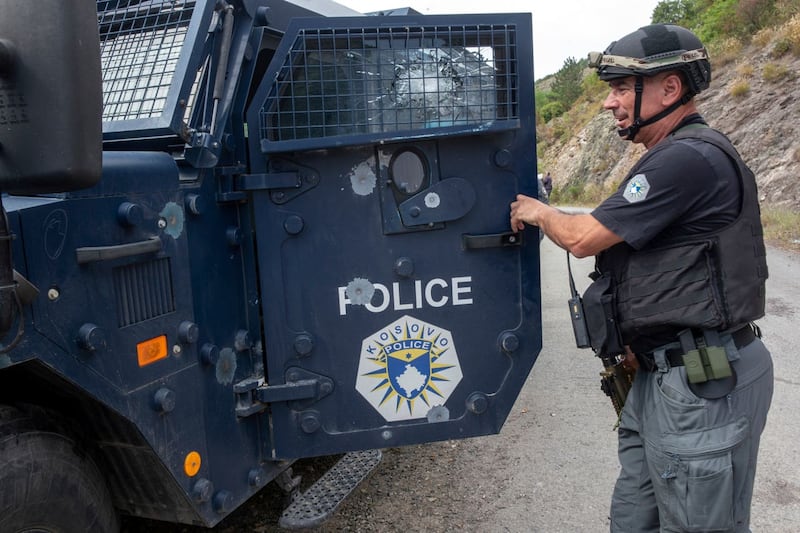
In one of the worst confrontations since Kosovo declared independence from Serbia in 2008, about 30 masked men opened fire on a police patrol near the village of Banjska early on Sunday.
They then broke down the gates of a Serbian Orthodox monastery and barricaded themselves inside with the priests and visiting pilgrims.
The violence further raised tensions in the Balkan region at a time when European Union (EU) and US officials have been pushing for a deal that would normalise ties between Serbia and Kosovo.
A Nato bombing campaign on Serb positions in Kosovo and Serbia led to the end of their 1998-99 war.
“What we know for sure is that they (the insurgents) came from Serbia,” Mr Svecla said.
“Some of them are Kosovo Serbs, who have dual citizenship, Kosovo and Serbian citizenship, that, by our intelligence information, were trained in camps in Serbia.”
“We found some documents which lead us to a suspicion that there were individuals coming from Russia too,” he said.
“For the equipment, we have evidence, but for the people we still have only suspicion.”
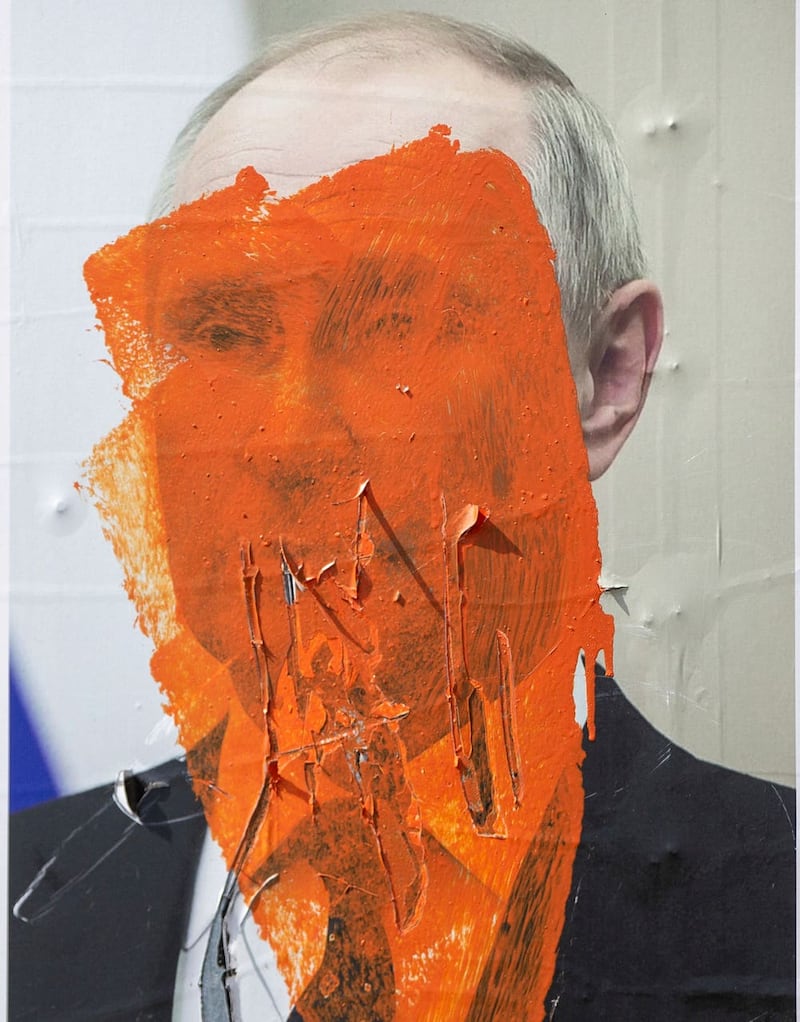
There are fears in the West that Russia, acting through Serbia, may want to destabilise the Balkans and shift at least some of the attention from Moscow’s full-scale invasion of Ukraine.
Russia has voiced support for Serbia over the clashes, blaming the West for allegedly failing to protect Kosovo Serbs.
Serbia’s president, Aleksandar Vucic has denied claims that Serbia was involved in the clash, saying the gunmen were local Kosovo Serbs “who no longer want to withstand the terror” of Kosovo’s ethnic Albanian authorities.
Mr Vucic’s statements have portrayed the gunmen as heroes and a national day of mourning was held for the three killed Serbs in both Serbia and northern Kosovo where they represent a majority.
After a meeting on Thursday with Danish foreign minister Lars Lokke Rasmussen, Mr Vucic described the situation as “the most complicated and dangerous so far”, blaming the tensions on the policies of Kosovo’s government and urging international help to protect ethnic Serbs.
Serbia’s chief negotiator with Kosovo, Petar Petkovic, demanded an independent investigation into the killing of the three Serb gunmen, saying they were “brutally” executed after surrendering to Kosovo police.
He said that Belgrade has witnesses and evidence, including photographs, but did not make them public.
Mr Svecla said that, based on the gathered evidence and drone footage, some of the assailants, who he referred to as “terrorists,” wore face masks throughout the operation.
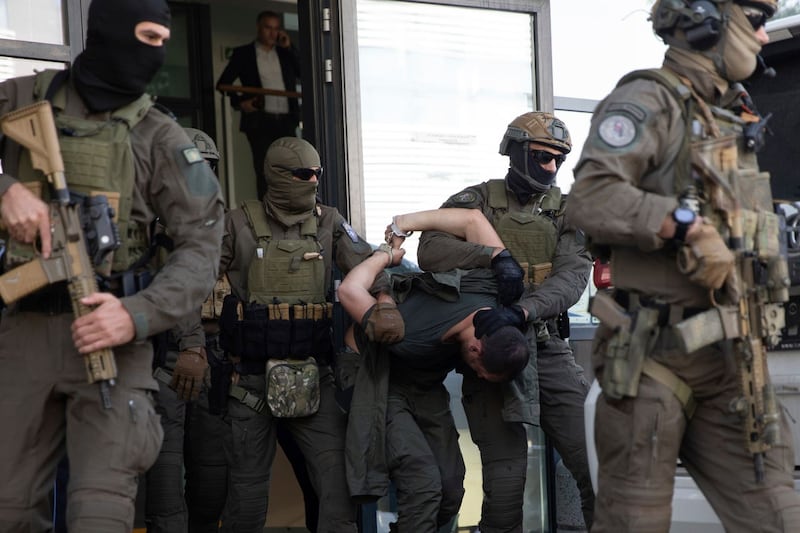
“Even the members of the group who were arrested didn’t know who they were,” he said.
“So they are either high officials from the security sector of Serbia or they might be directly coming from Russia itself.”
The interior minister said the aim of the operation appeared to be the seizure of northern Kosovo with the ultimate goal of seceding from the rest of the country.
“They had a 100 more uniforms,” Mr Svecla said.
“They were planning to recruit more people within (the communities) where Serbs live … Kosovo institutions would have to deal with the few hundred terrorists in a scenario which they planned.”
He said that judging from a large cache of weapons found at the scene of the clash, the attackers planned to heavily arm at least a couple of hundred people.
“Uniforms, personal armour, Kalashnikovs, sniper rifles, pistols. All this tells us there was equipment for a couple of hundred people together with logistics. It was equipment and weapons for a whole battalion,” he said.
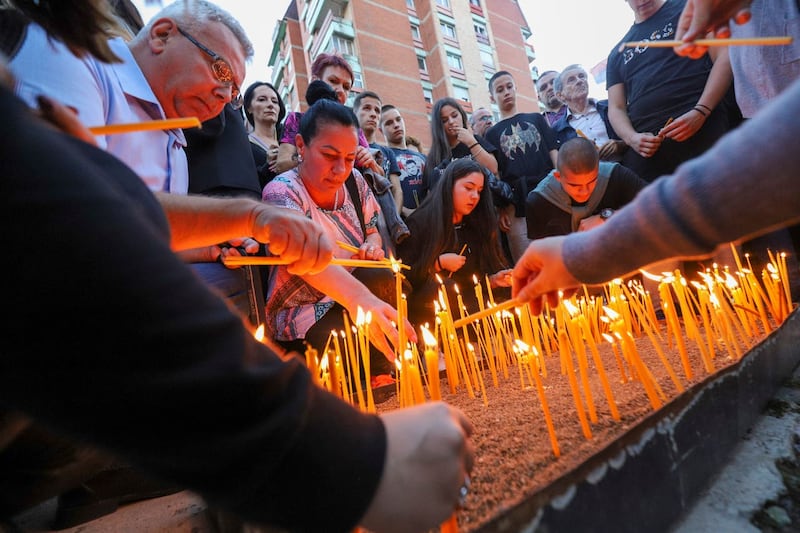
The danger of a new insurgency is not over, Mr Svecla said.
“We don’t have clashes but we have information that training of these terrorists continues in Serbia,” he said.
“There are still people in Kosovo who are part of this group.”
Serbia and Kosovo, a former province belonging to Belgrade, have been at odds for decades.
Their 1998-99 war left more than 10,000 people dead, mostly Kosovo Albanians.
Kosovo unilaterally declared independence in 2008 but Serbia has refused to recognise the move.
The EU, with the backing of the US, has been brokering negotiations between the two sides.
In February, Kosovo Prime Minister Albin Kurti and Mr Vucic gave their approval to a 10-point EU plan for normalising relations, but the two leaders have since distanced themselves from the agreement.
